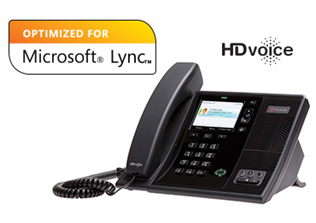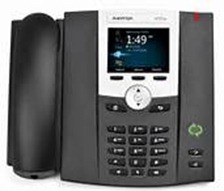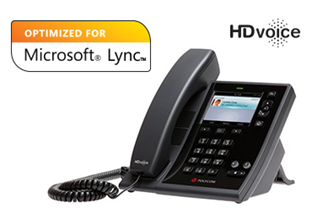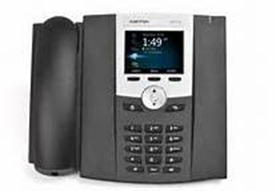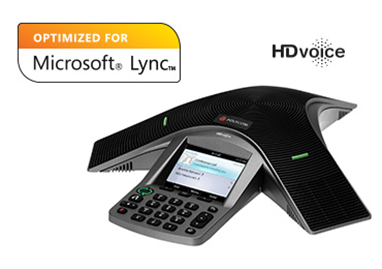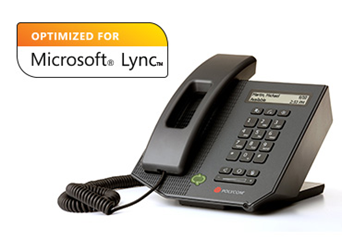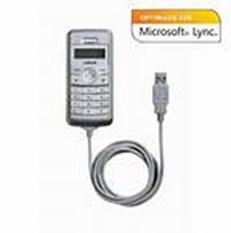Quick Review of some Lync headsets and devices
I’ve been a Unified Communications guy for quite some time and have been using Lync (and its predecessors) for many years now. During that time, I’ve had the opportunity to try out different headsets and thought I would take a few minutes and share some of my experiences.
Before I start, I want to make a few statements.
- This is my personal review and all opinions shared are mine and only mine
- This is in no way an official Microsoft review of devices (endorsement or otherwise)
- My budget is limited so 99% of the devices I talk about in this article were either given to me from the vendor or provided by Microsoft IT
- Some of the devices I talk about are older versions and I’m sure there are newer versions available, but I don’t have them
- These are my personal opinions (I know I said that already, but wanted to make sure everyone understands that)
I am breaking down the devices based on four different categories – IP Phones (doesn’t need the PC), Speaker Phones, Wired Headsets and Wireless Headsets.
IP Phones
1. Polycom CX600 and Aastra 6725ip:
This phone is what Microsoft would consider an Information Worker device. I sign in with my domain credentials and have access to all my Lync contacts and great integration with my Exchange calendar. Both phones have a message waiting indicator light in the upper right corner. I can easily retrieve my voicemails directly from this phone and see my missed calls log. Both of these phones plug directly into the network via an Ethernet cable (no wireless support at this time) and has a built in hub in case you only have one Ethernet drop and also need to connect your computer. I can also connect this to my computer via USB and it becomes another audio device that can be used directly by my Lync client.
Although the audio quality of handset on both phones are equal, I like the speakerphone on the CX600 better than the 6725ip. The one thing I don’t really like about CX600 is the placement of the USB and Ethernet ports. These ports are located on the bottom of the device and I have to pick up the phone in order to plug or unplug the USB or Ethernet cable. This is not a big deal as I don’t really connect it to my laptop on a regular basis and the network cable stays plugged in all the time. The placement of these ports on the 6725ip is along the top left and easily accessible without having to pick up the device.
I leave the CX600 plugged in all the time in my home office and the 6725ip is in my kitchen area so I can easily answer a phone call when I’m not in my office. I do turn down the ring volume so it doesn’t annoy my family too much. ![]()
2. Polycom CX500 and Aastra 6721ip:
These IP devices are well suited for use in common areas at an office. Neither device have USB ports or a built in Ethernet hub. The CX500 has a speakerphone but the 6721ip does not. These devices would be configured to login using a generic common area account so basic phone calls can be made from the device. At the same time, I could choose to log into the device as myself using my phone number and pin. This would then allow me to access my Lync contacts and Exchange calendar. The integration with Lync and Exchange is not quite as full featured as the CX600 and 6725ip but good enough for daily use. I do not use either of these devices on a regular basis at home but do bring them to the office if I plan to be there all day and want to have a standalone device.
3. Polycom CX3000:
This is a great IP phone for large conference rooms. Just like the CX600 and CX500, this device has integration with Lync contacts. There is a USB port on this device for connection to a computer for integration with the Lync client. I find the sound quality of the CX3000 to be very good. Unfortunately, I don’t need to use this very often at home since I join most of the conference calls I participate in from my office and it is only me. I do plan on using this a bit more moving forward as I will likely be in the office a bit more often.
Speaker Phones
1. Polycom CX100: This is a portable speakerphone that has decent audio quality. I find it works decently well in a smaller conference room with about 4 – 6 people around a round table. I like that I can answer calls and hang up using buttons on the CX100. The CX100 also has volume control and mute buttons for quick volume adjustment.
2. ClearOne Chat 70: This is also a portable speakerphone and I find the audio quality to be a little better than the CX100. Just like the CX100, this works well in a smaller conference room with about 4 – 6 people. The Chat 70 does have volume and mute controls but does not have buttons to answer a call or disconnect a call. That has to be done from the Lync client on the computer.
3. ClearOne Chat 170: This is a semi-portable speakerphone (about four times the size of the Chat 70) that works great in larger conference rooms. The Chat 170 has volume and mute controls but no answer / hang up controls just like the Chat 70. I have used this numerous times at User Group meetings where part of the attendees are present in the room and another group is attending online.
4. Plantronics Calisto 420: This is a portable speakerphone that has pretty good audio quality. It has volume and mute controls, but no call answering controls. This also works well in a smaller conference room setting just like the CX100 and Chat 70. It is a bit bulkier than the Chat 70, but did come with a nicer carrying case.
5. Jabra SPEAK 410: This is a portable speakerphone that has awesome audio quality. It has volume, mute, answer and hang up controls on the device. I just recently acquired this device from Jabra so have not had the chance to test it out in a larger conference room setting, but I have been using it at home for all my conference calls in the last two weeks and absolutely love the audio quality. I even use it as my main speaker for listening to music from my laptop.
Wired Headsets
1. Polycom CX300:
Although this is not really a headset, I am including it in this section since it doesn’t really fit any of the other ones. This is a USB connected device that has a dial pad with a LCD display. It has great integration with the Lync Client and will display the number / name of incoming calls as well as my status and date and time. The speaker phone quality is very good and I was using this as my main USB Lync device for the last year (when my Plantronics Savi Office with DECT 6.0 stopped holding a charge). Since it has a keypad, I am able to quickly dial a number without having to use the Lync client or enter conference codes easily as well.
2. Jabra Dial 520:
This is a portable USB device that is like a small candy bar cell phone. It works okay if there isn’t too much background noise. I use it every once in a while when I travel and want a wired device that has a dial pad.
3. Plantronics Blackwire C420-M: This headset has two soft padded earpieces with an adjustable boom microphone. I like that it has inline volume, mute and answer controls for quick adjustments during a call. It has stereo audio with great quality. This is a travel ready headset as the earpieces folds flat and it comes with a nice carry case. This was my main travel headset for quite some time and is still one of my favorite wired headsets.
4. Plantronics Blackwire C220-M: This headset has two foam padded earpieces with an adjustable boom microphone. This also has the same inline volume controls as the C420-M. In fact, all my Plantronics wired headsets have the same type of controls. It has stereo audio and the quality is very good. I am not a fan of foam padded earpieces if I am going to be on long conference calls as I don't find them to be as comfortable as the soft padded earpieces.
5. Plantronics Blackwire C210-M: This headset has one foam padded earpiece with an adjustable boom microphone.
6. Plantronics Blackwire C610-M: This headset has one soft padded earpiece with an adjustable boom microphone. As far as single earpiece headsets go, I like this one much better than the C210-M because of the soft padded earpiece. The audio quality is very good.
7. Jabra GN2000: This is similar to the Plantronics C220-M with two earpieces and an adjustable boom microphone and inline volume controls. I no longer have this device as I gave it to a friend 2 years ago who needed a wired headset.
Wireless Headsets
1. Plantronics Savi 430: This is a DECT wireless headset that works great in the office and on the road. The unit came with a base charging unit but at the same time, could be charged without the base using a simple adapter. The only thing I didn’t like about this unit is the large wireless adapter (D100-M) but then it did provide long range capabilities with DECT versus Bluetooth. This became my wireless headset of choice because of the range capabilities. The earpiece was also very comfortable and I was able to use it for long periods of time (1-2 hours) without my ear getting sore.
2. Plantronics Savi Office: The earpiece for this unit is identical to the Savi 430. It has a base unit connected to the computer via a wired USB connection and provides DECT 6.0 connectivity to the earpiece. This became my device of choice for home office use. I was able to walk around my house while on long conference calls without affecting the audio quality (or dropping the call).
3. Plantronics Voyager Pro: This was the first Bluetooth headset I got and I carried this along with the Savi 430 when I travelled. Call me weird, but sometimes I would be on calls for so long that the battery would die and having a second device allowed me to switch to the second device easily.
4. Plantronics Voyager Pro UC: This is the update to the Voyager Pro and I found it to have a longer battery life. I also like the smaller USB connector and carry case. This has become my primary wireless headset as it pairs to my HTC 8X as well for dual purpose use while on the road. One of the nice features that I like about this device is that if I’m not wearing the headset and a call comes in, all I have to do is pick it up and put it on my ear and it answers the call.
5. Jabra PRO 9470: I just recently acquired this device (compliments of Jabra – Thank you!!) and this is now my device of choice when working from my home office. Just like the Plantronics Savi Office, this device is connected to my PC via a USB cable. The earpiece pairs to the base via DECT 6.0 and also pairs with my HTC 8X (and a land line if I actually have one). Because my cell phone pairs with the base, I can be on a cell call using the earpiece and walk around the entire house (and even outside) without having the call drop (because I’m using DECT 6.0 connectivity from earpiece to the base). It is a single earpiece headset with a soft leather padded earpiece so it is super comfortable. I absolutely love this device!
Conclusion
All in all, I like all the devices that I’ve used over the years but I definitely had / have my favorites. Ultimately, the choice will come down to personal preference. I have found that I prefer soft leather padded earpieces versus the foam ones. Also, when I’m working at home or in a fairly quite office setting, a single earpiece device is preferable. I also like devices that have volume and mute controls so if I’m not in front of the computer (walking to get a drink of water), I can turn mute on and off. Below is my “Go To” list of devices that I use regularly.
- Jabra PRO 9470 [Primary home office device]
- Polycom CX300 [Secondary home office device]
- Jabra SPEAK 410 [Primary speaker phone – home and on the road]
- Plantronics Voyager Pro UC [Primary mobile device]
- Polycom CX600 and Aastra 6725ip [Always on IP Phones when not in front of PC or when PC is off]
Harold Wong
